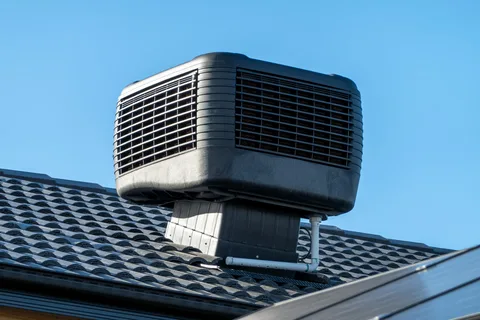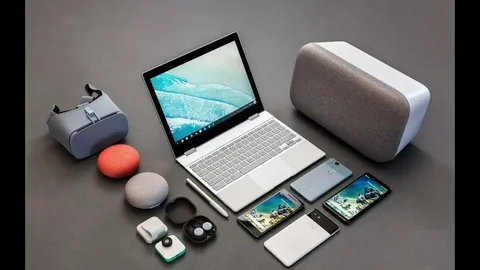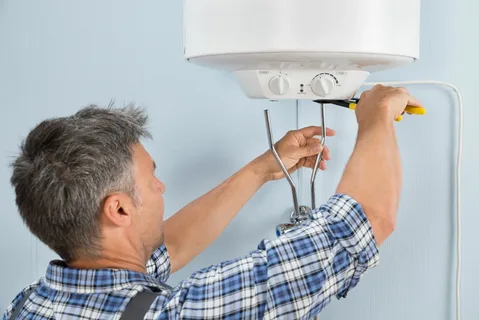Evaporative cooling systems consume significantly less electricity than standard air conditioning. Additionally, they don’t rely on harmful refrigerants and emit significantly fewer carbon emissions.
Residential evaporative coolers draw ambient air through vents on their sides and pass it over damp evaporative pads before distributing it. This cooling method is effective in areas with drier climates but can’t work well in environments that already have high levels of humidity.
Cost
Direct evaporative cooling systems are much cheaper than HVAC systems because they don’t require ductwork. Also, evaporative coolers use water as opposed to refrigerants, so they’re environmentally friendly.
However, the price of evaporative cooling can vary depending on your location. If your home is in a drought-stricken region, it may be more expensive to run a direct evaporative cooler than in a region where water is plentiful. Additionally, evaporative coolers require regular maintenance to ensure that the pads are clean and free from mineral deposits.
Indirect evaporative coolers are an alternative to direct evaporative cooling and can be more affordable for homes that don’t have the space to install ductwork. They have a heat exchanger that prevents humidity levels from rising in the airstream that enters your home. However, they can be more expensive to operate as the cost of running the heat exchanger can increase your energy consumption.
The heat exchanger in an indirect evaporative cooler is typically made of polymer or a combination of materials such as stainless steel and glass fibers. The warm air that passes through the heat exchanger gives up its heat to the water that’s flowing across the surface of the polymer, resulting in a reduction of the overall temperature of the air.
Additionally, the heat exchanger can reduce or eliminate mechanical refrigeration and chiller usage and save electricity by utilizing a low-wattage fan instead of a larger motor. This results in a lower operating cost of around 1/8 that of refrigerated cooling.
A direct evaporative cooling system can be set up to cool the entire house or just one room, but it’s important to open your windows to allow for the proper airflow and avoid causing moisture problems in your home. Also, the windows should be closed when the cooling system is off to prevent drafts.
While a direct evaporative cooler can be more cost-effective than an HVAC system, it’s still important to do your research before making the final decision. There are a variety of different brands and models to choose from, so you’ll want to select a unit that matches your budget.
Energy Efficiency
Evaporative cooling systems use the latent heat of vaporization to cool air. This means that liquid water is changed to water vapor when heated, and then the resulting vapor cools the air. The heat energy used is very low as compared to that required for mechanical refrigerant-based systems. In fact, direct evaporative coolers use less than half the energy of compressor-based air conditioning.
The most popular type of evaporative cooling is a direct evaporative cooler or swamp cooler, as it’s sometimes called. These systems consist of a fan or blower, water tank, pump, and wettable evaporative media. The evaporative media is coated in a special cellulose paper that’s saturated with insoluble anti-rot salts and rigidifying agents. It is then laid into a grid of tubes inside the heat exchanger. The fan blows the air over the evaporative media, and the water evaporates. The resulting cool air is then exhausted out of the building.
Direct evaporative cooling is most effective in hot and dry climates and at the hottest times of the day. It also performs best when humidity levels are lower. The direct evaporative cooling system is most efficient when outdoor wet-bulb temperatures (TWB) are above the evaporative cooling media wet-bulb temperature (SAT).
A home can be equipped with a direct evaporative cooling system either in a central location or connected to ductwork which distributes the cool air throughout the house. Ducted evaporative cooling systems are usually installed in homes with large living areas, like split-level homes and townhouses. A single, ground-mounted evaporative cooling system works well for smaller houses with open floor plans.
An indirect evaporative cooler system is available for arid climates where humidity levels are higher. It is often installed in schools, hospitals, offices, warehouses, distribution centers, retail, and data centers. IDEC systems can use 60% – 75% less power than compressed air-based cooling systems and provide cooler supply air with much lower relative humidity.
The energy efficiency of a direct evaporative cooling system can be improved even further by using it in combination with other cooling methods like chilled water or DX coils. The cool supply air helps to reduce the temperature of the evaporative cooling media and lower the overall system fan power.
Humidity Levels
Direct evaporative coolers work well in hot and dry climates and are the traditional cooling system for residential use. They are simple, mobile, and easy to maintain. They can be wall or window-mounted and are usually a lot quieter than air conditioners, especially in large homes.
They use a heat exchanger to pre-cool the air before it passes through water-soaked pads. This allows the air to cool and pick up humidity at the same time, making it a very effective cooling system. The pre-cooled air is then blown into the living space by a fan.
The moisture absorbed by the pads lowers the temperature of the supply air by a process known as enthalpy reduction or latent heat transfer. This explains why the cooling performance of a direct evaporative cooler is so much better than that of a refrigerant-based air conditioning system.
As the wet air cools, it drops to a dew point, and this lowers the supply air temperature even further. This is a key principle behind the design of all evaporative cooling systems. The lower supply air temperature also increases comfort levels because it helps to reduce static electricity and dust levels in the room.
An evaporative cooler is not recommended for humid environments as high humidity makes it harder for perspiration to evaporate and so doesn’t cool the body as efficiently. Indirect evaporative cooling can be a solution for these environments as it uses less energy and doesn’t raise the wet bulb temperature of the air, but this requires some specialized equipment and will not be as effective as a single-stage direct cooler in drier climates.
Indirect evaporative cooling (IDEC) can provide significant energy savings in buildings, as low as 50% of the power consumption of standard refrigerant-based air conditioning. These savings can be significant for facilities like schools, offices, warehouses, and clinics. These benefits can be increased by using a two-stage system that combines the effectiveness of direct and indirect evaporative cooling. These systems can be more expensive to install but offer a number of advantages.
Environment
Direct evaporative cooling is an effective alternative for air conditioning, providing superior energy efficiency in arid climates. It works on the simple principle that it takes heat energy to change water into vapor, thus reducing the temperature of the air. This is the same as how a wet handkerchief around your neck feels cool on a hot day.
This type of cooling system is a great alternative to conventional air conditioners as it doesn’t use refrigerants, CFCs, or HCFCs. It also uses fewer mechanical parts and requires less maintenance. Most basic evaporative coolers have only one fan and one water pump, which results in lower power consumption than compressor-based systems.
An additional benefit of this cooling system is that it does not increase the humidity of indoor air. This can be an issue in humid climates as high humidity levels reduce the rate at which moisture evaporates from the body, thus lowering the body’s natural cooling mechanism.
Another drawback of a direct evaporative cooling system is that it does require a continuous supply of water to the pad. This can be an issue in arid areas where water prices are expensive and can impact the overall operating costs of the system.
Additionally, evaporative cooling systems have the potential to generate a lot of dust, which can be an issue in dry environments. This dust can cause respiratory problems, particularly in people with existing health issues such as asthma.
Lastly, evaporative coolers can leave mineral deposits on the pads if they are used with hard water. This may require regular replacement and cleaning of the pads and can result in a higher overall cost of ownership. To minimize this effect, the water pumped into an evaporative cooler should be softened, which can be achieved by using a household water filter. This filter will reduce the calcium, magnesium, and other minerals present in hard water that can damage the pads and other components of an evaporative cooling system. The installation of this type of filter can be performed by a plumber or by the owner of the evaporative cooling system.





